Potrebujeme váš súhlas na využitie jednotlivých dát, aby sa vám okrem iného mohli ukazovať informácie týkajúce sa vašich záujmov. Súhlas udelíte kliknutím na tlačidlo „OK“.
ASTM D4373-14
Standard Test Method for Rapid Determination of Carbonate Content of Soils
Automaticky preložený názov:
Štandardná skúšobná metóda pre rýchle stanovenie obsahu uhličitanov zemín
NORMA vydaná dňa 1.5.2014
Informácie o norme:
Označenie normy: ASTM D4373-14
Poznámka: NEPLATNÁ
Dátum vydania normy: 1.5.2014
Kód tovaru: NS-26985
Počet strán: 5
Približná hmotnosť: 15 g (0.03 libier)
Krajina: Americká technická norma
Kategória: Technické normy ASTM
Kategórie - podobné normy:
Anotácia textu normy ASTM D4373-14 :
Keywords:
calcareous soils, calcite equivalent, carbonate content, Karbanat Bombe, marine soils, ICS Number Code 13.080.10 (Chemical characteristics of soil)
Doplňujúce informácie
| Significance and Use | ||||||||||||||||||||||||||||||||||||||||||||||
|
5.1 This test method is used to determine the presence and quantity of carbonate in a soil specimen in terms of the calcite equivalent. The method is generally intended for use as an index of approximate carbonate content to assist with characterizing marine soils. Other test methods exist (such as Method C25 and Test Method D3042) to evaluate calcium carbonate equivalency for purposes of characterizing use of calcareous materials as soil modifiers or agricultural lining materials. 5.1.1 Calcium carbonates (CaCO5.2 This test method has limitations as follows: 5.2.1 If low carbonate contents (calcite equivalents) are measured, the user does not know whether the soil is low in carbonate content or contains cerrusite, witherite, and the like, which are carbonate species whose reactions with hydrochloric acid are either very slow or limited. 5.2.2 Testing times may be extensive (longer than 1 hour) for some carbonate species (such as dolomite) if calcite equivalents within about 1 % are required. 5.2.3 The effects of specimen grain size, duration of testing, pH and specimen mass are discussed in the literature.1.1 This test method covers the determination of carbonate content of soils and soft rock which can be readily broken down by mechanical effort. It is a gasometric method that uses a simple portable apparatus. Results should be clearly stated as the calcite equivalent in percent because different carbonate species cover a wide range of percent calcite equivalent as shown below for a number of carbonates:
For example, a 100 % dolomite would be expected to yield 108.6 % calcite equivalent while 100 % siderite would yield only 86.4 % calcite equivalent. Calcite and aragonite reactions will typically complete within about 10 minutes. This method does not distinguish between the carbonate species and such determination must be made using quantitative chemical analysis methods such as atomic absorption. 1.2 Units—The values stated in SI units are to be regarded as the standard. 1.3 All observed and calculated values shall conform to the guidelines for significant digits and rounding established in Practice D6026. 1.3.1 The procedures used to specify how data are collected/recorded or calculated, in this standard are regarded as the industry standard. In addition, they are representative of the significant digits that generally should be retained. The procedures used do not consider material variation, purpose for obtaining the data, special purpose studies, or any considerations for the user's objectives; and it is common practice to increase or reduce significant digits of reported data to be commensurate with these considerations. It is beyond the scope of this standard to consider significant digits used in analytical methods for engineering design. 1.4 This standard does not
purport to address all of the safety concerns, if any, associated
with its use. It is the responsibility of the user of this standard
to establish appropriate safety and health practices and determine
the applicability of regulatory limitations prior to use.
Standard Practice for Using Significant
Digits and Data Records in Geotechnical Data Standard Specification for
Gravity-Convection and Forced-Ventilation Ovens Standard Terminology Relating to Soil,
Rock, and Contained Fluids Standard Test Methods for Chemical
Analysis of Limestone, Quicklime, and Hydrated Lime Standard Specification for Woven Wire
Test Sieve Cloth and Test Sieves Standard Guide for Evaluating, Selecting,
and Specifying Balances and Standard Masses for Use in Soil, Rock,
and Construction Materials Testing Standard Practice for Minimum
Requirements for Agencies Engaged in Testing and/or Inspection of
Soil and Rock as Used in Engineering Design and Construction Standard Test Method for Insoluble
Residue in Carbonate Aggregates |
Podobné normy:
Historická
1.11.2013
Historická
1.1.2013
Historická
1.11.2006
Historická
15.6.2010
Historická
1.7.2009
Historická
1.6.2009


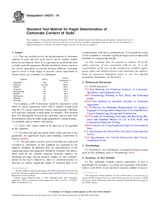
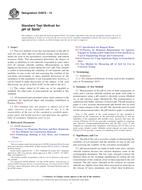 ASTM D4972-13
ASTM D4972-13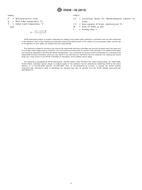 ASTM D5258-02(2013)..
ASTM D5258-02(2013)..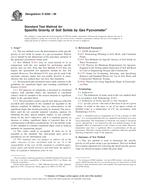 ASTM D5550-06
ASTM D5550-06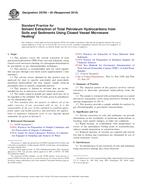 ASTM D5765-05(2010)..
ASTM D5765-05(2010)..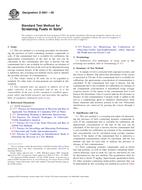 ASTM D5831-09
ASTM D5831-09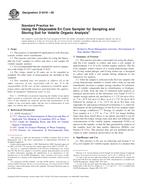 ASTM D6418-09
ASTM D6418-09
 Cookies
Cookies
